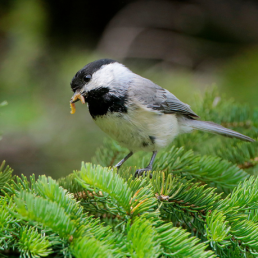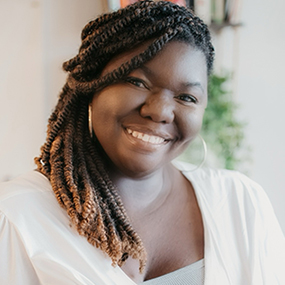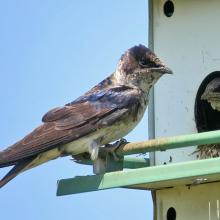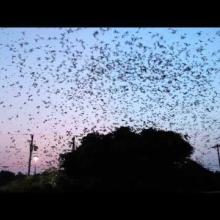

Join BirdNote tomorrow, November 30th!
Illustrator David Sibley and actor H. Jon Benjamin will face off in the bird illustration battle of the century during BirdNote's Year-end Celebration and Auction!
In the Southeast, on the lands of the Cherokee, Chickasaw, and Choctaw, Purple Martins nested in dried gourds hung up by Native Americans. This relationship might have developed because Purple Martins defend their turf, says Kelly Applegate, a tribal member and Commissioner of Natural Resources for the Mille Lacs band of Ojibwe. White settlers copied the practice and put up gourds and birdhouses, too. But they also cleared forests where martins once nested and introduced House Sparrows and starlings that drove them out of woodpecker holes. Purple Martins now depend almost entirely on artificial nest boxes to survive. Kelly is encouraging people to provide homes for martins.
BirdNote®
Providing Homes to Purple Martins
Adapted from the Bring Birds Back podcast
This is BirdNote.
[Purple Martin calls]
Purple Martins are a kind of swallow. In the pre-Colonial US they would nest in abandoned woodpecker holes. Or, in the Southeast, on the lands of the Cherokee, Chickasaw, and Choctaw, in dried gourds hung up by Native Americans. This relationship might have developed because Purple Martins defend their turf, says Kelly Applegate, a tribal member and Commissioner of Natural Resources for the Mille Lacs band of Ojibwe.
Kelly Applegate: Tribes would harvest berries that needed to dry, drying meats or hides that would attract predators. The Native Americans found that if they had this Purple Martin colony, because they're defensive of their nesting area, they would drive off those things that would come in and, and try to steal the community's goods.
White settlers copied the practice and put up gourds and birdhouses, too. But they also cleared forests where martins once nested and introduced House Sparrows and starlings that drove them out of woodpecker holes. Purple Martins now depend almost entirely on artificial nest boxes to survive. Kelly is encouraging people to provide homes for Purple Martins.
Kelly Applegate: My goal is to see these birds survive. As a tribal member, we try to plan for our next seven generations to come. And I would enjoy nothing more than to know that this species will be around for our future generations to enjoy the way I do.
[Purple Martin calls]
Learn more about Purple Martin conservation on the Bring Birds Back podcast. Listen in your podcast app or at BirdNote dot org. I’m Tenijah Hamilton.
###
Senior Producer: John Kessler
Content Director: Allison Wilson
Producer: Mark Bramhill
Managing Producer: Conor Gearin
Bird sounds provided by The Macaulay Library of Natural Sounds at the Cornell Lab of Ornithology, Ithaca, New York.
BirdNote’s theme was composed and played by Nancy Rumbel and John Kessler.
© 2022 BirdNote November 2022
Narrator: Tenijah Hamilton
ID# PodBBB-18-2022-11-04 PodBBB-18




